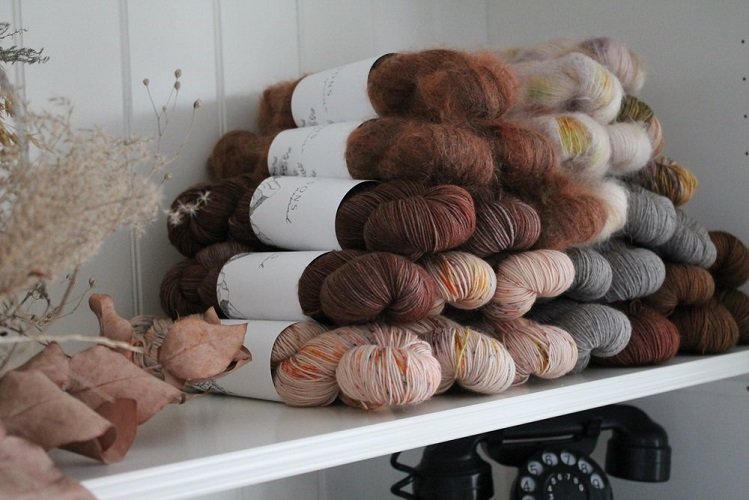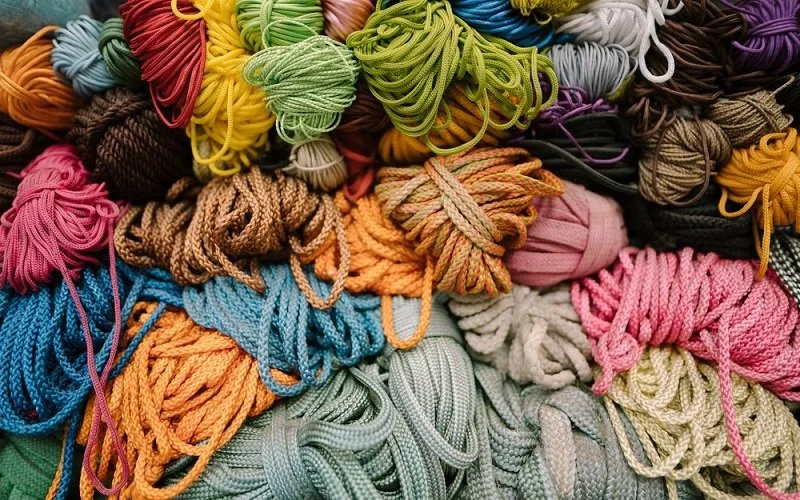How to Pick the Best Yarn for Your Next Crochet Project
I was hooked on crochet from an early age. It became my favourite thing to do and I was always trying out new things.
I loved to design hats and scarves for my siblings, but in reality, I didn’t really know what I was doing.
I would try to use yarn to the best of my abilities, sometimes this worked really well but often my designs failed badly and never saw the light of day. I realised that to get better at what I loved doing I need to have a better understanding of the craft and learn about it.
So, in search of the perfect stitch, colour and yarn combination I embarked on a journey of learning.
I’m a firm believer that there is no wrong choice of yarn and that you can make any project with any yarn.
However, there are some considerations and choices you can make that lead to a much better outcome.
In the following article, you’ll find out more about the different fibres available and advice on how to find the right yarn for your perfect, dream project.
Let’s look at the 3 key types of fibre: Animal, Plant, Synthetic
Animal Fibers
Animal fibres include fibre that is the hair of an animal such as:
Wool - Sheep
Mohair - Goat
Alpaca
Llame
Angora - Rabbit
Cashmere - Goat
The hair of the animal is removed by shearing and is then processed into yarn. These yarns can be highly-insulating, breathable, and warm, however, but they can be itchy and cause allergic reactions. In addition, animal fibres will most likely have to be
hand-washed and laid flat to dry.
Wool, made from the fleece of sheep is the most common yarn fibre for crocheting hats, mitts, scarves heavy blankets or warm cardigans.
Organic Wool
Organic wool is not chemically treated, processed, or altered. This also means the yarn usually comes from healthy sheep that are not dipped or treated with antibiotics. Organic wool can be expensive and delicate but it’s great for the environment and animal welfare.
2. Plant Fibers
Plant fibres include any fibres derived from the seeds, stems or leaves of a plant such as:
Cotton
Bamboo
Rayon
Hemp
Flax
Linen
Unlike animal fibres, plant fibres are more smooth. Plant-based yarns make a wonderful alternative if you have an animal allergy or sensitive skin. Plant fibres are great if you live in warmer climates without the need for the warmth of wool or other animal fibres. Most plant-based yarns tend to feel cooler, and less itchy against the skin than animal fibres.
Some of the yarns made from this fibre can be machine-washed and dried.
Cotton is soft, breathable, and kind to sensitive skin, which means it is often used for creating baby clothes and blankets. Cotton is also common in summer hats as its durability helps maintain the shape of the brim.
3. Synthetics
Synthetic, or man-made fibres can mimic some of the elements of the plant- or animal fibres. Synthetics include the following:
Acrylic
Nylon
Polyamide
Microfiber
Usually, synthetics are machine washable and dryable. They are created with chemicals rather than naturally-occurring elements. For example, polyester is a synthetic yarn made from a blend of plant extract, petroleum, and coal, which means it isn’t very environmentally friendly.
Generally speaking, synthetics are cheaper than animal or plant-based yarns, and they’re much easier to maintain.
Silk
Silk is deprived from the silkworm, and the silk fibres are the secretion of the animal as it creates its cocoon. These fibres are long and straight and act much more like plant fibre when turned into yarn. Silk is one of the most expensive yarn types because its procurement process is labour-intensive. Silk is it’s strong, shiny, and smooth to the touch.
Once you wrapped your head around all the different options available you need to consider that many yarns on the market are combinations or blends, of two more of these fibres. For example, a yarn might have merino wool for warmth and silk for its shine. Depending on the percentage of each fibre, you might have a yarn that acts like wool even though other fibres are present.
This is where swatching and building an understanding of different yarns and blends can really work to your advantage.
But rest assured, even some of the most experienced crocheters won’t have complete knowledge of all the different yarns available.
But What About The Ply?
Well, I’m glad you asked! When a yarn is spun, the fibres are given a bit of twist to hold them together. So, when a single length of fibre is given a twist, it’s known as a single ply or singles. You can take two singles and twist them together to create a 2 -ply yarn. Can you see where I am going? You can take three, four or eight singles and ply them together to create different plied yarns.
Novelty Yarn
Novelty yarns are used to add elements such as textures. They’re usually made of synthetic fibres like polyester and are considered in a separate category from conventional yarn types.
Though they may seem fun, novelty yarns are often tricky to work with as they can be highly textured, which makes it harder to identify individual crochet stitches.
How to Pick The Perfect Yarn For Your Project?
Experiment with different crochet patterns and see how different fibres feel. In the end, your favourite yarn selection will be totally unique to you – a bit like fashion, what works for you might not work for others!
If you are using a specific crochet pattern, it’s best to stick to the yarn type specified in the instructions. Changing the yarn can have a huge impact on the final results of the design. Hence, it is best to work with the suggested yarn or an exact alternative if you don’t want a huge surprise result.
If you are using a pattern on my website, you will find there is a suggested yarn for each project so you don’t have to go looking.
If you’re crocheting something unique or working on your own design, ask yourself the following questions when selecting a yarn type:
Are you creating an item for winter or summer? Do you want it to be warm and cosy, or cool and breathable?
What texture should your design have? Does it need to be smooth and durable, or soft and fluffy?
Do you want the finished item to be machine-washable?
Who is the item for? Will it be worn by a baby, or, someone with allergies or perhaps sensitive skin?
How much do you want to spend on yarn?
Conclusion
Armed with your new yarn knowledge and details covered in this post, you’ll be able to find a yarn fibre type and material that suits your next project perfectly.
It’s super useful to always crochet a swatch before you embark on your full project, to test the yarn and hooks you’re using.
But most importantly have fun and enjoy the process! Happy crocheting!
What is your favourite yarn to work with?
Let me know in the comments below!








Small crochet projects, like the individual squares in a blanket, may seem like tiny tasks, but they hold incredible power. By breaking down larger projects into manageable pieces, you can reduce overwhelm and make steady progress. This approach not only helps in crafting but also in life. Learn how embracing small steps fosters a sense of accomplishment, boosts your confidence, and makes achieving bigger goals feel more achievable.